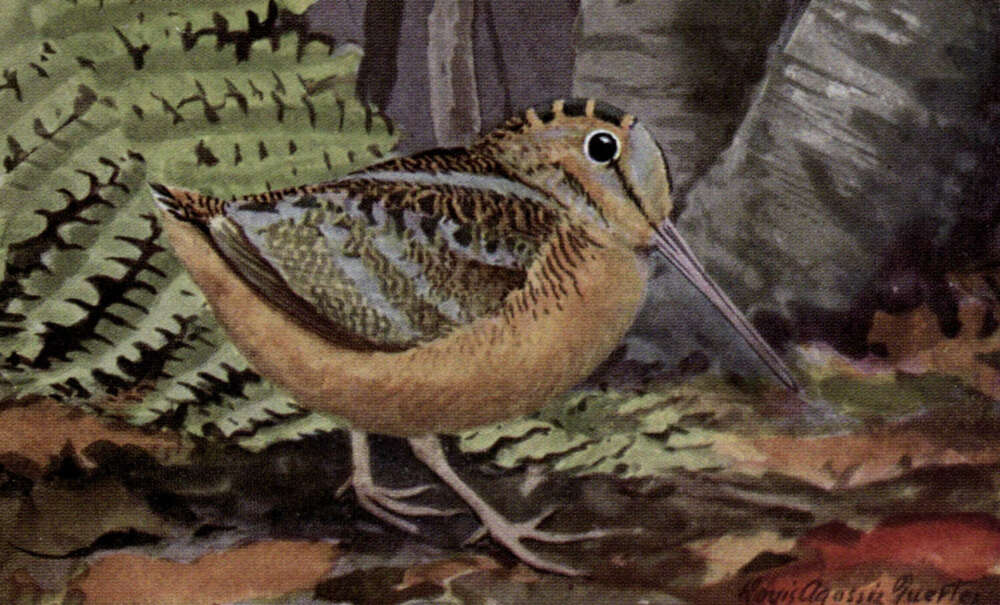The Wrack
The Wrack is the Wells Reserve blog, our collective logbook on the web.
The Wrack is the Wells Reserve blog, our collective logbook on the web.
For those of us who eagerly await the return of early spring migratory birds, this is the best time of year. In particular if you enjoy one of the greatest shows of spring—the aerial courtship display of the American woodcock.
For nearly 25 years I have been leading walks in April at the Wells Reserve to teach people about the American woodcock (Scolopax minor) and its life history—its physiology, behavior, habitats, and mating rituals. I have taken many groups out at sunset, all of us standing quietly at the edge of a field waiting for the right moment when the male woodcock emerges from the woods to begin his song and aerial courtship flight above us, a phenomenon wildlife ecologist Aldo Leopold called “the Sky Dance.”
Unfortunately, we had to cancel this public program this April. However, that should not stop you from enjoying this annual fantastic feat of nature at a field and forest near you. Follow these tips and you will be able to hear and see the mating ritual of the American woodcock.

Time of Year: The woodcock arrives here in March. You will have the most success seeing and hearing them during their peak breeding season in April.
Habitats: The woodcock’s favorite food is earthworms, so you will find them in areas where alders and young red maples grow, places with moist soils. They also like dense cover (thickets) to hide themselves from predators. They like mature forests for nesting. And they particularly like open fields at least ½ acre in size, primarily for breeding displays but also night-time resting. In summary, look for open fields, adjacent forests, and moist alder thickets or similar tangles.
Time of Day: Male woodcock emerge from the forest (where they spend the day) reliably 15 minutes to 24 minutes after sunset, depending on cloud cover. It’s early on cloudy evenings, later on clear evenings, as it is the low light conditions that trigger the bird’s mating habits. I recommend you arrive at sunset by the edge of a field, stay quiet, and wait.
Look and Listen: After emerging from the forest, the male settles into a place at the field’s edge and begins to emit a buzzy, nasal-sounding “peent.” He will peent several times before eventually launching into a spiraling climb up to 250 feet above the field. The flight produces a twittering sound caused by air rushing through three outer wing feathers. As he comes to the apex of his flight, he descends, emitting a melodious song. He lands almost invariably within 12 feet from where he took off. He will repeat this performance many times over for 30 to 45 minutes before ending when true nightfall arrives.
I hope you have a chance to get out into the forests and fields of southern Maine this month to enjoy the woodcock and other avian life. Like the woodcock, I shall return next April to bring Wells Reserve visitors out to experience the Sky Dance. If you have questions in the meantime, get in touch.